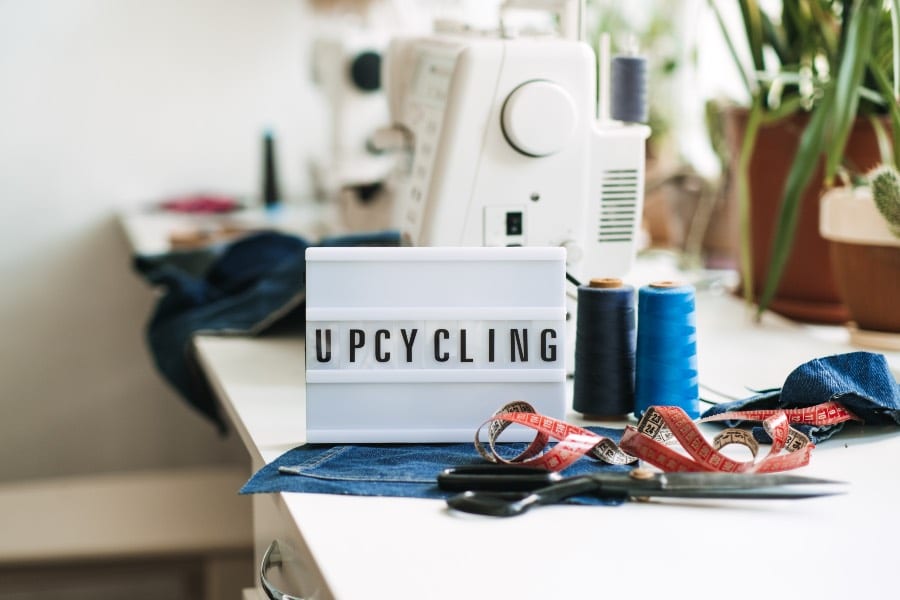The luxury industry is often attacked for its environmentally unfriendly production practices. However, luxury and eco-friendly fashion are not mutually exclusive. To embody this change and evolve consumer perception of these brands, luxury is reinventing itself in the post-covid era. How are luxury brands making this important shift? What can they do to revitalise their production methods? This is what we will detail here.
Upcycling and recycling: facing global challenges in luxury industries
Methods decried by public opinion
Textile production requires the use of chemicals that emit many greenhouse gases. Until recently, the challenge of global warming was still a marginal cause for the major luxury brands. The large retailers had become accustomed to producing more and more, to multiplying the new collections and throwing away unsold items.
In 2017, H&M destroyed the equivalent of 12 million unsold clothes in Denmark. A practice that is shocking to international opinion.
Upcycling, a paradigm shift
This fast fashion philosophy is no longer sustainable in the long term. Luxury brands are often singled out for their lack of awareness of environmental issues.
Today, major brands such as Giorgio Armani, Maison Margiela and Louis Vuitton claim to be responsible fashion brands. Their manufacturing chain takes into account the recycling and transformation of the product.
For some time now, the designer Jean-Paul Gaultier has been using upcycling in his fashion shows in Paris. Some of the mannequins’ skirts were made from pieces of shirts.
Anti-waste law introduced to change attitudes
Since 1 January 2022, an anti-waste law for the circular economy has been introduced by the government. It forces big brands to transform their production methods.
The objective is clear: to sanction companies that do not play the game in terms of environmental matters. With this law, unsold goods will have to be reused and recycled to give the product a second life.
Did you know…
40% of the clothes produced by luxury brands will never be worn. And this waste is even more pronounced during major sales periods such as “Les Soldes” in France or Black Friday events. This observation fully justifies the legislator’s position on the issue.
Upcycling and recycling, how are some luxury brands adapting?
In order to transform their production methods, some luxury brands are getting creative with original ideas for recycling and upcycling.
The TILLI brand, which offers a home sewing service, has integrated upcycling into its working methods. For example, they turn unsold trousers into a pouch by reusing her fabric. They use the silk material in the skirts to make scarves.
Their philosophy is to take all the unused clothes in a wardrobe and turn them into everyday objects or more eco-friendly clothes.
Other companies have also taken the responsible clothing route. La vie est Belt recycles old sheets to make pants and used tyres to make ready-to-wear belts.
Jewellery can also be given a second life. Designer Kitesy Martin offers upcycled jewellery. She designs vintage pieces with a unique style that mixes luxury and retro. From medals to gold coins to energy stones, each piece of jewellery has its own story.
Zero waste target for the luxury industry
Luxury brands are encouraged to manage stocks better and to avoid wasting textiles. They are slowing down to reduce their impact on the environment.
Brands such as Marine Serre and Duran Lantink have already taken the lead in this area. With the consequences of the pandemic, luxury brands have adapted and integrated recycling and upcycling approaches.
Recycling unsold goods into new raw materials
Instead of throwing away unused raw materials, LVMH uses pieces of leather clothing or rolls of fabric to upcycle them into new pieces. The group is committed to the circular economy by signing a partnership with WeTurn a start-up specialising in fibre recovery, to manufacture new spools of yarn.
Upcycling, the birth of a new product through the transformation of materials
Recently, the LVMH group launched its own online marketplace, dedicated to unused leather and fabric sales.
Last year, the Louis Vuitton brand launched a spring-summer collection by transforming high top sneakers into low top trainers made from unused raw materials.
Maison Margiela makes Tabi boots from leather scraps and recycled wicker bags.
In 2020, Hermès also marketed around 40,000 products produced through upcycling.
Since the health crisis, luxury brands have changed their mentality and their method of producing clothing. The major luxury brands have realised that they have an important role to play in the environmental challenges facing the world. All unused materials can be transformed.
Recycling, upcycling, second life: these terms, which have been, until recently, completely foreign to the big brands are now an integral part of their daily lives. This is a move that is welcomed by consumers who want more transparency on the manufacturing methods of luxury brands.







